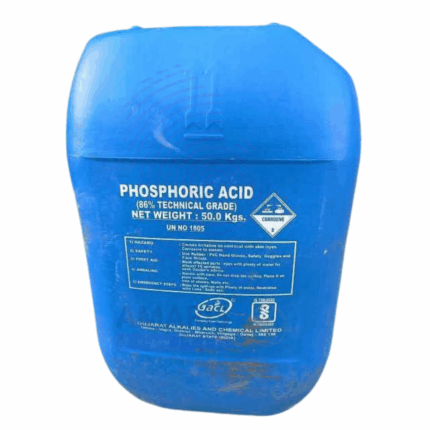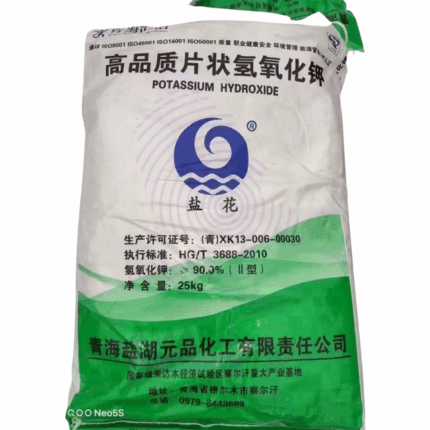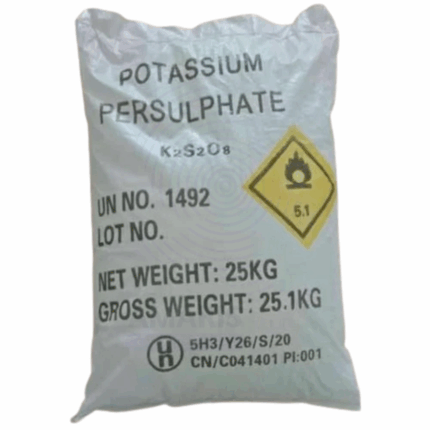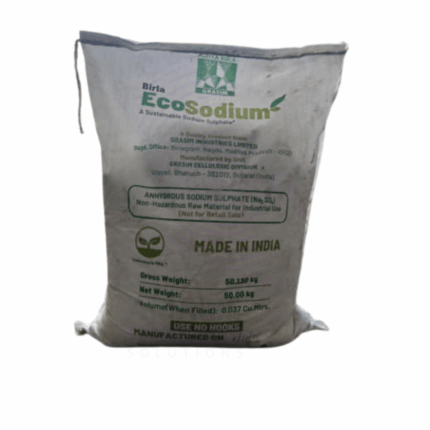Triethanolamine
Triethanolamine (TEA) is a viscous, colorless to pale yellow liquid with a mild ammonia-like odor. It is a multifunctional organic compound widely used in cosmetics, pharmaceuticals, and industrial applications as a pH adjuster, emulsifier, surfactant, and corrosion inhibitor. Triethanolamine neutralizes fatty acids to form soaps and helps stabilize emulsions, making it essential in personal care formulations and various chemical manufacturing processes. Its versatility and compatibility with other ingredients make it a valuable additive in numerous industries.
Primary Uses
Cosmetics and Personal Care: Acts as a pH balancer, emulsifier, and surfactant in creams, lotions, shampoos, and soaps, helping to stabilize formulations and improve texture.
Pharmaceuticals: Used as a pH adjuster and emulsifying agent in ointments, creams, and topical solutions.
Industrial Applications: Functions as a corrosion inhibitor and neutralizing agent in metalworking fluids, boilers, and cooling systems.
Chemical Manufacturing: Used in the production of surfactants, detergents, and textile processing chemicals.
Secondary Uses
Agriculture: Used as a component in pesticide formulations to enhance spreading and penetration.
Paints and Coatings: Acts as a neutralizer and stabilizer in water-based paints and coatings.
Printing Industry: Serves as a pH regulator and emulsifier in ink formulations.
Gas Treatment: Utilized in gas scrubbing to remove acidic gases like CO2 and H2S.
Chemical Name (IUPAC): 2,2',2''-Nitrilotriethanol
Common/Trade Name: Triethanolamine (TEA)
CAS Number: 102-71-6
HS Code: 2922.49.00
Synonyms: TEA, Tri-hydroxyethylamine
Physical & Chemical Properties
Physical State: Viscous liquid
Color & Odor: Colorless to pale yellow; mild ammonia-like odor
Boiling Point: 335 °C (decomposes)
Melting Point: 20 °C
Density: 1.125 g/cm³ at 20 °C
Solubility: Miscible with water and alcohol
pH: Alkaline (typically 10.5–11.5 in 1% solution)
Safety & Hazard Attributes
GHS Classification: Skin irritant (Category 2); eye irritant (Category 2A)
Toxicity: Low acute toxicity but can cause irritation with prolonged exposure
Exposure Limits: No specific occupational exposure limit established; use general safety guidelines
Storage & Handling Attributes
Storage Conditions: Store in tightly sealed containers in a cool, dry, well-ventilated area
Container Type: Plastic or steel drums, jerrycans
Shelf Life: 24 months under proper storage conditions
Handling Precautions: Avoid inhalation and skin/eye contact; use personal protective equipment (PPE)
Regulatory & Compliance Attributes
Complies with REACH, FDA (for certain uses), and other major international chemical regulations
Manufactured under Good Manufacturing Practices (GMP) for cosmetic and pharmaceutical grades
Listed on TSCA and other chemical inventories worldwide
Environmental & Health Impact
Biodegradability: Readily biodegradable under aerobic conditions
Ecotoxicity: Low toxicity to aquatic organisms at typical use concentrations
Bioaccumulation: Not significant
PPE Required: Gloves, goggles, and protective clothing recommended
Handling Guidelines: Use in well-ventilated areas; avoid direct contact
Storage Measures: Keep containers sealed and away from incompatible materials such as strong acids
First Aid Measures
Inhalation: Move to fresh air if inhaled; seek medical attention if symptoms develop
Skin Contact: Wash with soap and water; remove contaminated clothing
Eye Contact: Flush eyes with water for 15 minutes; seek medical advice if irritation persists
Ingestion: Rinse mouth and seek medical advice if necessary
Firefighting Measures
Fire Hazards: Combustible liquid; emits toxic fumes on burning
Extinguishing Media: Use foam, dry chemical, or carbon dioxide
Hazardous Combustion Products: Carbon oxides, nitrogen oxides


 Preservatives(food)
Preservatives(food) Flavor Enhancers
Flavor Enhancers Acidulants
Acidulants Sweeteners
Sweeteners Antioxidants
Antioxidants Colorants(food)
Colorants(food) Nutraceutical Ingredients (food)
Nutraceutical Ingredients (food) Nutrient Supplements
Nutrient Supplements Emulsifiers
Emulsifiers
 Collectors
Collectors Dust Suppressants
Dust Suppressants Explosives and Blasting Agents
Explosives and Blasting Agents Flocculants and Coagulants
Flocculants and Coagulants Frothers
Frothers Leaching Agents
Leaching Agents pH Modifiers
pH Modifiers Precious Metal Extraction Agents
Precious Metal Extraction Agents
 Antioxidants(plastic)
Antioxidants(plastic) Colorants (Pigments, Dyes)
Colorants (Pigments, Dyes) Fillers and Reinforcements
Fillers and Reinforcements Flame Retardants
Flame Retardants Monomers
Monomers Plasticizers
Plasticizers Polymerization Initiators
Polymerization Initiators Stabilizers (UV, Heat)
Stabilizers (UV, Heat)
 Antifoaming Agents
Antifoaming Agents Chelating Agents
Chelating Agents Coagulants and Flocculants
Coagulants and Flocculants Corrosion Inhibitors
Corrosion Inhibitors Disinfectants and Biocides
Disinfectants and Biocides Oxidizing Agents
Oxidizing Agents pH Adjusters
pH Adjusters Scale Inhibitors( water)
Scale Inhibitors( water)
 Antioxidants(cosmetic)
Antioxidants(cosmetic) Emollients
Emollients Fragrances and Essential Oils
Fragrances and Essential Oils Humectants
Humectants Preservatives
Preservatives Surfactants(cosmetic)
Surfactants(cosmetic) Thickeners
Thickeners UV Filters
UV Filters
 Fertilizers
Fertilizers Soil Conditioners
Soil Conditioners Plant Growth Regulators
Plant Growth Regulators Animal Feed Additives
Animal Feed Additives Biostimulants
Biostimulants Pesticides (Herbicides, Insecticides, Fungicides)
Pesticides (Herbicides, Insecticides, Fungicides)
 Active Pharmaceutical Ingredients (APIs)
Active Pharmaceutical Ingredients (APIs) Excipients
Excipients Solvents(pharmaceutical)
Solvents(pharmaceutical) Antibiotics
Antibiotics Antiseptics and Disinfectants
Antiseptics and Disinfectants Vaccine Adjuvants
Vaccine Adjuvants Nutraceutical Ingredients (pharmaceutical)
Nutraceutical Ingredients (pharmaceutical) Analgesics & Antipyretics
Analgesics & Antipyretics
 Analytical Reagents
Analytical Reagents Solvents(lab)
Solvents(lab) Chromatography Chemicals
Chromatography Chemicals Spectroscopy Reagents
Spectroscopy Reagents microbiology-and-cell-culture-reagents
microbiology-and-cell-culture-reagents Molecular Biology Reagents
Molecular Biology Reagents Biochemical Reagents
Biochemical Reagents Inorganic and Organic Standards
Inorganic and Organic Standards Laboratory Safety Chemicals
Laboratory Safety Chemicals Specialty Laboratory Chemicals(Special Laboratory Equipment)
Specialty Laboratory Chemicals(Special Laboratory Equipment)
 Demulsifiers
Demulsifiers Hydraulic Fracturing Fluids
Hydraulic Fracturing Fluids Scale Inhibitors(oil)
Scale Inhibitors(oil) Surfactants(oil)
Surfactants(oil) Drilling Fluids
Drilling Fluids
 Dyes and Pigments
Dyes and Pigments Bleaching Agents
Bleaching Agents Softening Agents
Softening Agents Finishing Agents
Finishing Agents Antistatic Agents
Antistatic Agents
 Admixtures
Admixtures Waterproofing Agents
Waterproofing Agents Sealants and Adhesives
Sealants and Adhesives Curing Compounds
Curing Compounds Concrete Repair Chemicals
Concrete Repair Chemicals Anti-Corrosion Coatings
Anti-Corrosion Coatings
 Surfactants(cleaning)
Surfactants(cleaning) Builders
Builders Enzymes
Enzymes Solvents (Cleaning)
Solvents (Cleaning) Fragrances
Fragrances
 Electronic Chemicals
Electronic Chemicals Catalysts
Catalysts Lubricants
Lubricants Photographic Chemicals
Photographic Chemicals Refrigerants
Refrigerants Automotive chemicals
Automotive chemicals Pyrotechnic Chemicals
Pyrotechnic Chemicals
 Biodegradable Surfactants
Biodegradable Surfactants Bio-based Solvents
Bio-based Solvents Renewable Polymers
Renewable Polymers Carbon Capture Chemicals
Carbon Capture Chemicals Wastewater Treatment Chemicals
Wastewater Treatment Chemicals
 Pigments
Pigments Solvents(paint)
Solvents(paint) Specialty Coatings
Specialty Coatings Binders/Resins
Binders/Resins Additives
Additives Driers
Driers Anti-Corrosion Agents
Anti-Corrosion Agents Functional Coatings
Functional Coatings Application-Specific Coatings
Application-Specific Coatings
 Fresh Herbs
Fresh Herbs Ground Spices
Ground Spices Whole Spices
Whole Spices Spice Blends
Spice Blends Dried Herbs
Dried Herbs
 Leavening Agents
Leavening Agents Dough Conditioners
Dough Conditioners Flour Treatments
Flour Treatments Fat Replacers
Fat Replacers Decoratives
Decoratives Preservatives(baking)
Preservatives(baking)
 Plasticizers & Softeners
Plasticizers & Softeners Reinforcing Agents
Reinforcing Agents Adhesion Promoters
Adhesion Promoters Vulcanizing Agents
Vulcanizing Agents Antidegradants
Antidegradants Blowing Agents
Blowing Agents Fillers & Extenders
Fillers & Extenders Accelerators & Retarders
Accelerators & Retarders




























